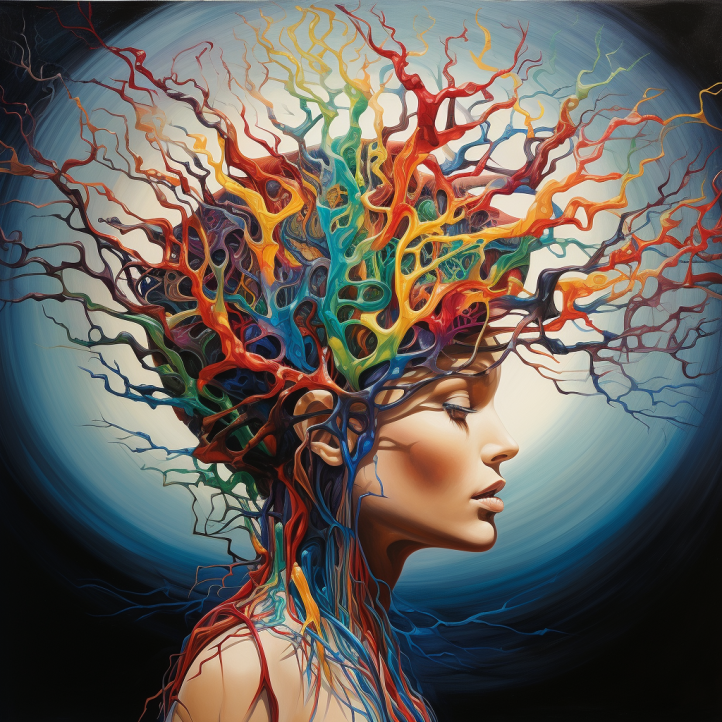Big picture: Psychoplastogens are a groundbreaking new class of psychoactive compounds that rapidly induce structural and functional changes in the brain, allowing pathological neural circuits to be rewired for therapeutic benefit.
Key facts about psychoplastogens:
- Rapidly increase neural plasticity, unlike traditional antidepressants that work slowly.
- Produce fast-acting and sustained antidepressant effects in humans after a single dose.
- Promote growth of neurons and synapses in areas like the prefrontal cortex.
- Include compounds like ketamine and psychedelics.
- Represent a paradigm shift in psychiatry from symptom relief to circuit-level healing.
Source: Front Psychiatry & J Exp Neurosci.
Psychoplastogens to Rewire Brain Connections
For decades, psychiatry has operated under the assumption that mental illnesses like depression arise predominantly from chemical imbalances in the brain that can be rectified with drugs that alter neurotransmitter levels.
This monoamine hypothesis led to the development of selective serotonin reuptake inhibitors (SSRIs) like Prozac, which increase serotonin levels by preventing its reuptake into neurons.
However, SSRIs take weeks to improve mood in patients, highlighting the inadequacy of the monoamine theory.
Over the last 20 years, researchers have gradually replaced the monoamine hypothesis with the neuroplasticity hypothesis of depression.
This new theory posits that mood disorders stem from a loss of connections between neurons (synapses) in key brain circuits, resulting in disrupted functional connectivity.
The most promising treatment approach under this new framework involves using compounds capable of rapidly promoting neural plasticity to regrow lost synapses in affected circuits.
Enter: psychoplastogens.
What Are Psychoplastogens and How Do They Work? (Mechanisms of Action)
The term “psychoplastogen” refers to any compound that can rapidly induce structural or functional changes at the neural circuit level by stimulating plasticity mechanisms.
This distinguishes psychoplastogens from older drugs like SSRIs that gradually alter plasticity only after chronic administration.
Some known psychoplastogens include:
- Ketamine – an NMDA receptor antagonist and anesthetic.
- Psychedelics – serotonergic drugs like LSD, DMT, and psilocybin.
- Scopolamine – a muscarinic receptor antagonist.
These compounds activate plasticity by increasing levels of glutamate, an excitatory neurotransmitter involved in synaptic plasticity.
Glutamate activates AMPA receptors, which stimulates the release of BDNF, a protein vital for neural growth and survival.
This ultimately leads to activation of the mTOR pathway and synthesis of proteins required for synaptic plasticity.
Within just 24 hours of administration, psychedelics and ketamine increase the number of dendritic spines, arbor complexity, and synapse number in key brain regions like the prefrontal cortex (PFC).
These rapid structural changes are sustained long after the drugs are cleared from the body, leading to lasting functional rewiring of circuits involved in complex behaviors.
Treatment of Psychiatric Disorders with Psychoplastogens

The ability of psychoplastogens to quickly remodel neural circuits has made them promising experimental treatments for several psychiatric conditions characterized by dysfunctional brain connectivity:
Depression: Loss of dendritic spines in the PFC may underlie depressive symptoms. Psychoplastogens rapidly increase PFC synapses and improve mood faster and for longer than SSRIs.
PTSD: Deficits in fear extinction from poor PFC-amygdala connectivity contribute to PTSD. Psychoplastogens strengthen PFC-amygdala circuits and enhance fear extinction in preclinical models.
Addiction: Reduced PFC inhibition of reward centers promotes addiction. Psychoplastogens repair PFC circuitry, reducing drug cravings in addicted individuals.
Beyond these major indications, preliminary evidence suggests psychoplastogens could have therapeutic value for anxiety, OCD, chronic pain, stroke, concussions, and neurodegenerative disorders.
However, more research is certainly needed.
Limitations of Current Psychoplastogens
Despite great promise as rapid-acting antidepressants and anxiolytics, first generation psychoplastogens suffer from major limitations:
Hallucinogenic effects: Psychedelics like psilocybin impart profound changes in sensory perception that patients may find frightening or unappealing.
Abuse potential: Ketamine, an addictive street drug, requires careful administration to avoid misuse.
Transient effects: Ketamine’s therapeutic benefits wane after approximately one week.
Administration route: Psychedelics must be given under supervision in specialized psychiatric clinics due to safety concerns.
High cost: The clinic-based administration model makes treatments like ketamine extremely expensive.
Lack of circuit specificity: Current psychoplastogens globally promote plasticity, which can have unintended consequences in brain regions besides intended targets.
Fortunately, an emerging understanding of the neurobiology underlying psychoplastogen effects may soon enable development of improved next generation brain circuit drugs.
The Future of Precision Psychoplastogens & Psychiatry
To overcome current limitations, researchers are pursuing non-hallucinogenic psychoplastogens that retain rapid and sustained therapeutic activity with minimal side effects.
Early drug discovery efforts have focused on:
- Psychedelic analogs without hallucinogenic properties.
- Metabolites of known psychoplastogens.
- Compounds with polypharmacology at relevant receptor targets.
- Cell type-specific targeting via localized receptor expression.
Selectively activating neurons bearing 5-HT2A receptors holds particular promise, as these are concentrated in cortical regions affected in mood disorders.
Early preclinical studies with non-hallucinogenic psychedelic-like compounds demonstrate comparable antidepressant-like behavioral responses to ketamine and psilocybin after single administrations.
Translating these findings to the clinic could enable psychoplastogenic neurotherapeutics suitable for pharmacy dispensing rather than specialized administration.
More convenient treatment paradigms would greatly increase the accessibility and scalability of rapid-acting interventions for psychiatric illnesses.
Further work elucidating mechanisms downstream of glutamate and 5-HT2A receptors may ultimately yield optimized psychoplastogens capable of targeting specific cell types within individual brain circuits.
Overall, psychoplastogens represent a paradigm shift in psychiatry away from simplistic chemical imbalance theories toward directly repairing damaged neural circuitry underlying complex behavioral pathologies.
Harnessing the full therapeutic potential of these compounds will require additional basic neuroscience research to increase our understanding of both normal and pathological plasticity signaling cascades.
However, the progress made in recent decades strongly suggests that psychoplastogen-inspired medicines could soon revolutionize how we treat some of the most burdensome and enigmatic diseases afflicting humanity.
References
- Study: Psychedelics and other psychoplastogens for treating mental illness
- Authors: Maxemiliano V. Vargas et al. (2021)
- Study: Psychoplastogens: A promising class of plasticity-promoting neurotherapeutics
- Author: David E Olson (2018)







